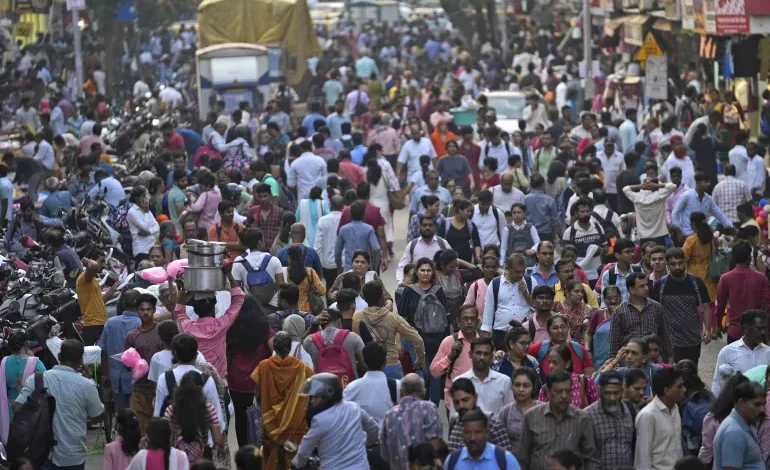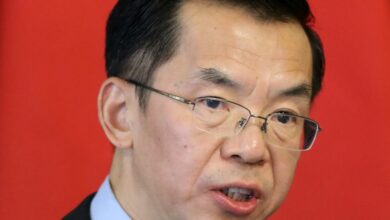Resolving India’s population woes requires political maturity
Sitaraman Shankar

Population growth in India is on a downward trajectory. Economist Shamika Ravi, a member of the Economic Advisory Council to Indian Prime Minister Narendra Modi, recently commented on X that fertility rates in more than three-quarters of India’s states are now below what is required to maintain population levels.
For the world’s most populous country, with a population over 1.45 billion, this should be an occasion for celebration, especially given its overburdened infrastructure and scarcity of resources.
But many of the country’s leaders don’t seem pleased with this state of affairs.
Chief ministers of Tamil Nadu and Andhra Pradesh, two progressive and relatively prosperous states in the south of the country, have been calling on their constituents to have more children. The central government, led by Modi and his right-wing Bharatiya Janata Party (BJP), meanwhile, appears hellbent on parliamentary reforms that would reduce the representation of states that managed to curtail their population growth while awarding states that continue to grow with more seats.
If all this appears illogical, it’s worth remembering that what makes short-term sense politically often does not make sense in any other way.
For one, the decline in population growth is not uniform across the country. Some of India’s most populous and poorest states are still growing rapidly, increasing the strain on the richer states that are forced to subsidise them. Second, with a revamp of the Parliament of India that would give more seats to states with larger populations looming on the horizon, richer states that are less populous – and have been much more successful in implementing population control strategies – are worried about their future representative power at the centre. Third, the decline in the fertility rate means the country’s much-touted “demographic dividend” – strong economic growth due to a large proportion of the population being of working age – will peter out.
Government data shows that the three major Indian states still growing at high rates are Uttar Pradesh (UP), Bihar and Jharkhand, all in the north. UP, which already has more people than Brazil, has a fertility rate of 2.4, while Bihar’s is at 3.0 and Jharkhand’s is 2.3 – all higher than the Indian average of 2.0 and above the replacement rate of 2.1. However, in rich southern states, which are home to some of India’s most prosperous and productive cities, like tech powerhouse Bangalore and car-making hub Chennai, fertility rates stand at 1.7-1.8, well below the current India average and the replacement rate.
In response to these numbers, Tamil Nadu’s Chief Minister MK Stalin (named after the late Soviet dictator) and Andhra Pradesh’s Chief Minister Chandrababu Naidu have made calls that fly in the face of years of careful government-sponsored family planning schemes.
Andhra Pradesh has abolished a law disqualifying people with more than two children from contesting local body elections. Naidu has gone as far as to state that having larger families is a “responsibility” and a “service to society”.
Stalin, concerned about the south’s potential loss of parliamentary seats in the upcoming parliamentary reform exercise, went a step further and asked “Why shouldn’t we aim for 16 children?” While this was a reference to a Tamil language adage, hopefully not to be taken literally, it is likely the beginning of a campaign to put pressure on the central BJP government to abandon the planned parliamentary reforms.
The BJP wants to revamp the Parliament by a process called “delimitation”, which will assign seats to each state according to population figures from a new census that is to be conducted sometime in the next couple of years. The southern states are furious, arguing that the exercise will punish them for their good track record in keeping population growth in check.
There also appears to be a cynical side to this reform effort, as it will likely benefit Modi’s BJP politically.
Some calculations show that the north of the country, which is the stronghold of Modi’s right-wing party, will likely gain some 30 seats in Parliament, roughly the same amount the south will lose if the existing seats were to be redistributed according to the data that will be gathered in the upcoming census. If Parliament is expanded in line with the country’s population growth, the north will gain more than 150 seats and the south a mere 35.
So either way, it is in the BJP’s interests to try and push delimitation through. Even now, winning UP is usually enough to win the national election. If the state has even more seats, and the BJP holds onto its support base there, it could be in power for a very, very long time.










